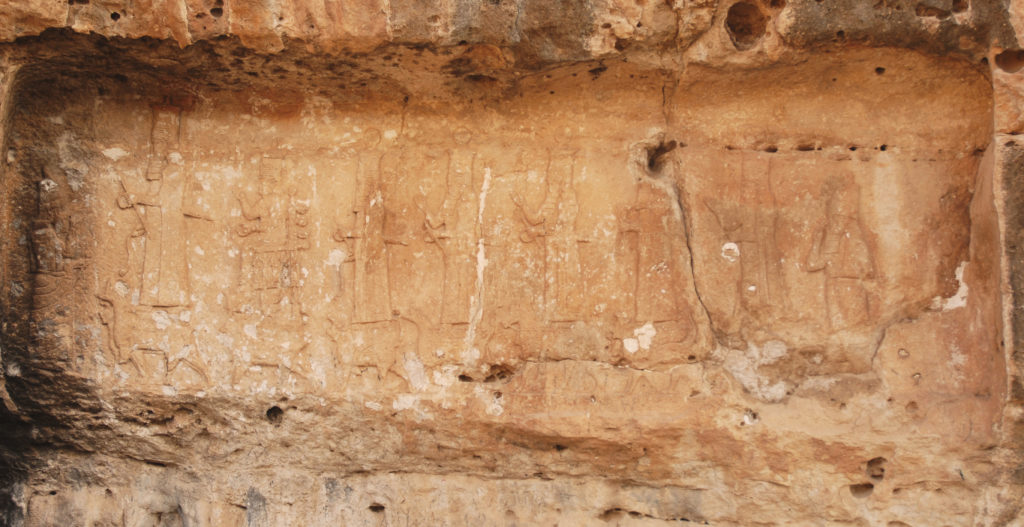

INCIDENT REPORT FEATURE: THE MALTHAI RELIEFS
U. S. DEPT. COOPERATION AGREEMENT NUMBER: S-IZ-100-17-CA021
BY Jamie O’Connell
Vandalism damages ancient reliefs.
* This report is based on research conducted by the “Safeguarding the Heritage of the Near East Initiative,” funded by the US Department of State. Monthly reports reflect reporting from a variety of sources and may contain unverified material. As such, they should be treated as preliminary and subject to change.
The Malthai Reliefs are a series of four Neo-Assyrian bas-reliefs carved into the cliff-side above the village of Malthai (in the suburbs of Dohuk) on the south bank of Dohuk River. Three reliefs are grouped close together while the fourth is located about 50 meters to their right. Each relief is approximately six meters long and two meters high. The same composition of nine figures in a procession is repeated on each panel with small variations.

A photograph taken by Gertrude Bell in May 1909 shows Relief 2.

A photograph taken by Gertrude Bell in May 1909 shows Relief 3. This panel was damaged in antiquity when it was turned into a tomb.

A pre-damage photograph of Relief 2 from 2014.
All four relief panels have sustained damage, but not all of this is recent. Sometime during the 1st to 3rd centuries CE, for example, large holes were cut in two of the panels to make tombs. Relief 3 was damaged in the 1920s when antiquities thieves cut out part of the panel next to the tomb entrance. This stolen section was later recovered and is reportedly in the Iraq Museum in Baghdad. The small holes seen on all four reliefs are due to the natural porosity of the rock.
In February 2016, the Assyrian International News Agency reported that one of the panels at Malthai had been vandalized with a spray-painted Kurdish flag. This graffiti was not present when an ASOR CHI source visited Malthai in late December 2015.

A Kurdish flag spray-painted on Relief 3.

Graffiti and a spray-painted Kurdish flag discovered on Relief 2 in April 2016.
On March 31, 2017 Shwenawarakany Kurdistan published photographs on Facebook showing conservators removing spray paint and other graffiti from the reliefs. The work was reportedly carried out with the help of unidentified European scholars, the Dohuk Directorate of Antiquities, and experts from the University of Dohuk.

Conservators work to mitigate damage to Relief 1.

Conservators remove spray-paint graffiti from Relief 2.

Damage to face of Sennacherib on Relief 4 (Babylon FM; May 8, 2017)
